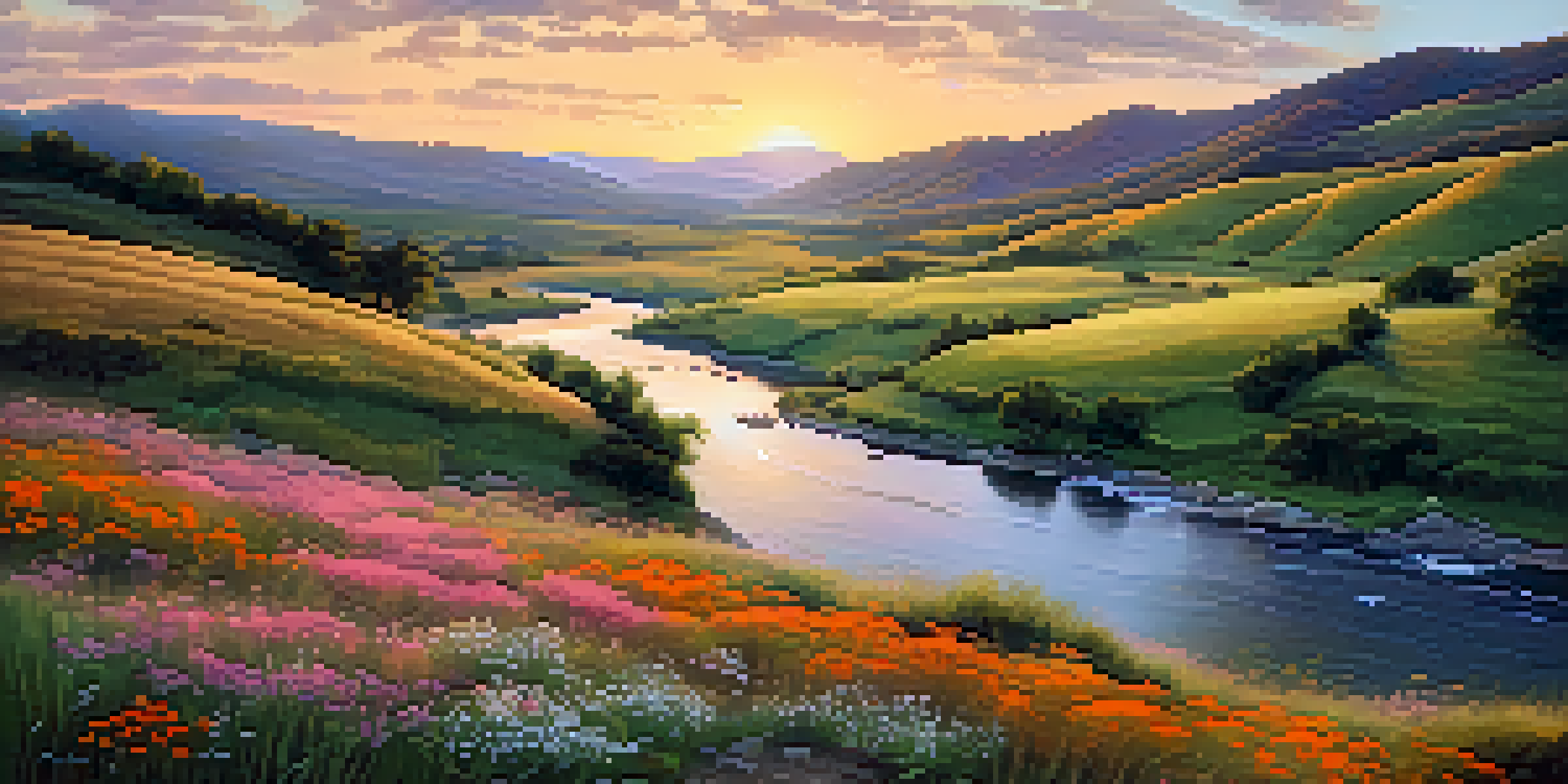Photography as Art: Techniques for Capturing Stunning Images

Understanding the Basics of Photography
Before diving into advanced techniques, it's crucial to grasp the fundamentals of photography. Understanding concepts like exposure, aperture, and shutter speed sets the foundation for capturing stunning images. These elements work together, much like a recipe, where each ingredient affects the final dish.
Photography is the story I fail to put into words.
For instance, think of exposure as the amount of light that hits your camera sensor. If there's too much light, your image becomes overexposed, losing detail in the highlights. Conversely, too little light results in an underexposed image, which can appear muddy and dark. Learning to balance these elements is key to mastering your craft.
Related Resource
Once you’re comfortable with these basics, you'll find yourself more confident in experimenting with creative techniques. Remember, photography is as much about understanding the technical side as it is about expressing your artistic vision.
The Power of Composition in Photography
Composition refers to how elements are arranged within your frame. It's the difference between a snapshot and a work of art. Utilizing techniques like the rule of thirds can guide your viewer’s eye, creating a more engaging image. Imagine dividing your frame into a tic-tac-toe grid; placing your subject along these lines can lead to a more dynamic composition.

Another powerful technique is leading lines, where natural lines in the scene draw the viewer's eye towards the subject. This could be a winding road, a river, or even architectural elements. By incorporating these elements into your photography, you can create a sense of depth and intrigue.
Mastering Photography Basics
Grasping fundamental concepts like exposure, aperture, and shutter speed is essential for capturing stunning images.
Ultimately, great composition can transform an ordinary scene into something breathtaking. Taking the time to consider how you frame your shots can make all the difference in capturing stunning images.
Mastering Lighting Techniques for Stunning Photos
Lighting is one of the most crucial aspects of photography that can dramatically affect your images. Natural light, especially during golden hour (the hour after sunrise and before sunset), can add a warm glow to your photos. Think of it as nature’s filter, enhancing colors and textures beautifully.
The best camera is the one you have with you.
On the flip side, harsh midday sunlight can create unflattering shadows and highlights. To counter this, you might seek out shaded areas or utilize reflectors to bounce light onto your subject. Understanding how to manipulate light will empower you to capture images that truly stand out.
Related Resource
Experimenting with different lighting scenarios can open up a world of creative possibilities. Remember, the right light can turn an ordinary scene into a captivating masterpiece.
Exploring Different Photography Styles and Genres
Photography is a vast field encompassing various styles and genres, each with its unique charm. From portrait and landscape photography to street and wildlife photography, finding your niche can be both exciting and rewarding. Each genre presents its own challenges and opportunities for creative expression.
For example, landscape photography often requires patience and an eye for detail, while street photography thrives on spontaneity and capturing fleeting moments. By exploring different styles, you can discover what resonates with your artistic vision and personal taste.
The Art of Composition
Effective composition techniques, such as the rule of thirds and leading lines, can elevate your photography from ordinary to extraordinary.
Don’t hesitate to mix genres or step out of your comfort zone. This exploration can lead to unexpected and stunning results, enriching your photography journey.
Editing Techniques to Enhance Your Photography
Post-processing is an essential part of modern photography, allowing you to enhance your images further. Software like Adobe Lightroom or Photoshop can help you adjust exposure, contrast, and color balance, turning a good shot into a great one. Think of editing as the final brushstrokes on a painting, refining your vision.
However, it's important to strike a balance; over-editing can lead to unnatural results. A subtle touch often yields the best outcomes, keeping the essence of your image intact while enhancing its appeal. Consider it a way to emphasize the story you want your photograph to tell.
Related Resource
Learning to edit effectively takes time, but it can significantly elevate your work. With practice, you'll develop a keen eye for what adjustments will enhance your images without losing their authenticity.
The Importance of Telling a Story Through Your Images
Every photograph has the potential to tell a story, whether it's a candid moment of joy or a serene landscape. This narrative aspect can engage your audience on a deeper level. Think about the emotions you want to evoke and how your composition, lighting, and subject matter can convey that feeling.
For example, capturing a child's laughter emphasizes joy, while a solitary figure in a vast landscape might evoke feelings of loneliness. By deliberately choosing your subjects and settings, you can convey messages and emotions that resonate with viewers.
Telling Stories Through Images
Every photograph has the potential to convey a narrative, engaging viewers and evoking emotions through careful subject and setting choices.
Storytelling in photography adds depth and meaning to your images, transforming simple snapshots into powerful visual narratives. Always consider what story you want your photograph to tell.
The Role of Patience and Practice in Photography
Photography is an art that thrives on patience and practice. Great shots often come from waiting for the right moment, whether it's a stunning sunset or a candid expression. This can mean spending hours or even days in pursuit of that perfect shot, but the reward is often worth the wait.
Moreover, honing your skills takes time. Regularly practicing different techniques, exploring various genres, and experimenting with your camera settings can lead to significant improvement. Consider it as training for an athlete; consistent effort leads to mastery.

Embrace the journey of learning and experimenting. Each photograph is a step toward developing your unique style and voice as a photographer.